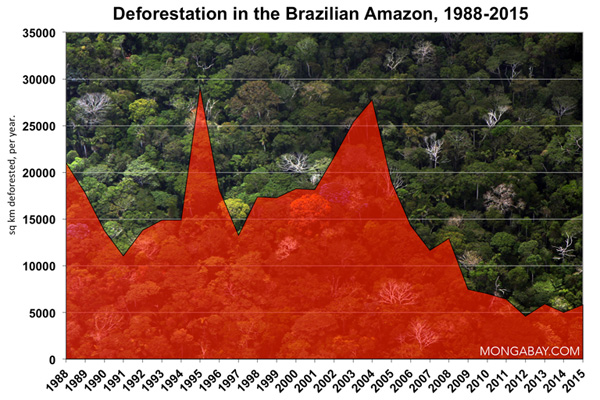Brazil’s greenhouse-gas emissions dropped 39 percent between 2005 and 2010, largely due to a reduction in deforestation, reports an inventory released yesterday by the Brazilian government.
More than three-quarters of the 1.25 billion ton reduction in carbon dioxide emissions came from a drop on forest loss in the Amazon rainforest and surrounding cerrado ecosystem. Deforestation in Brazil has fallen sharply since the first half of last decade when the government rolled out a plan to control Amazon deforestation. In 2010, the government announced a similar approach for the cerrado, a woody savanna that covers 20 percent of the country and has been the target for agricultural expansion in recent years.

Overall Brazil’s CO2 emissions in 2010 were 10 percent below 1990 levels, pacing it far ahead of most major industrialized countries in terms of emissions reductions. For example, U.S. greenhouse gas emissions rose 8.5 percent between 1990 and 2010.
However while Brazil’s emissions from land use have been falling, emissions from the energy sector have been rising rapidly. A study published last year estimated that fossil fuels burning could could pass deforestation as a source of emissions in Brazil. Accordingly, Brazilian president Dilma Rousseff said yesterday that the government now needs to aim for cleaner energy production. Part of that push includes new hydroelectric projects, according to Rousseff.
Yet new dams are a contentious issue in some parts of Brazil. Dams in rainforest areas can generate substantial emissions in the form of methane, a powerful greenhouse gas.
Brazil says it is also making substantial investments in clean energy technologies.
Related articles